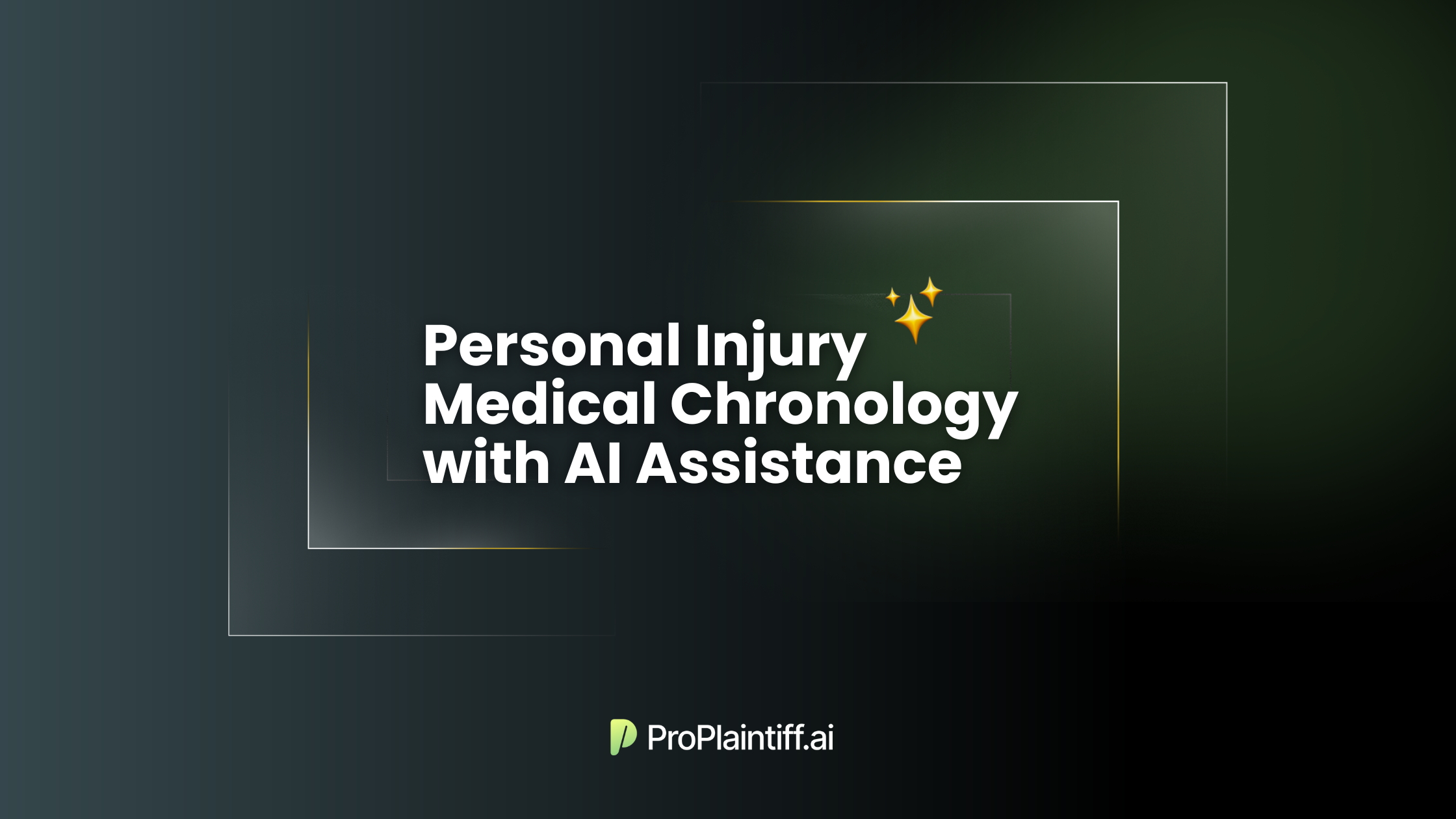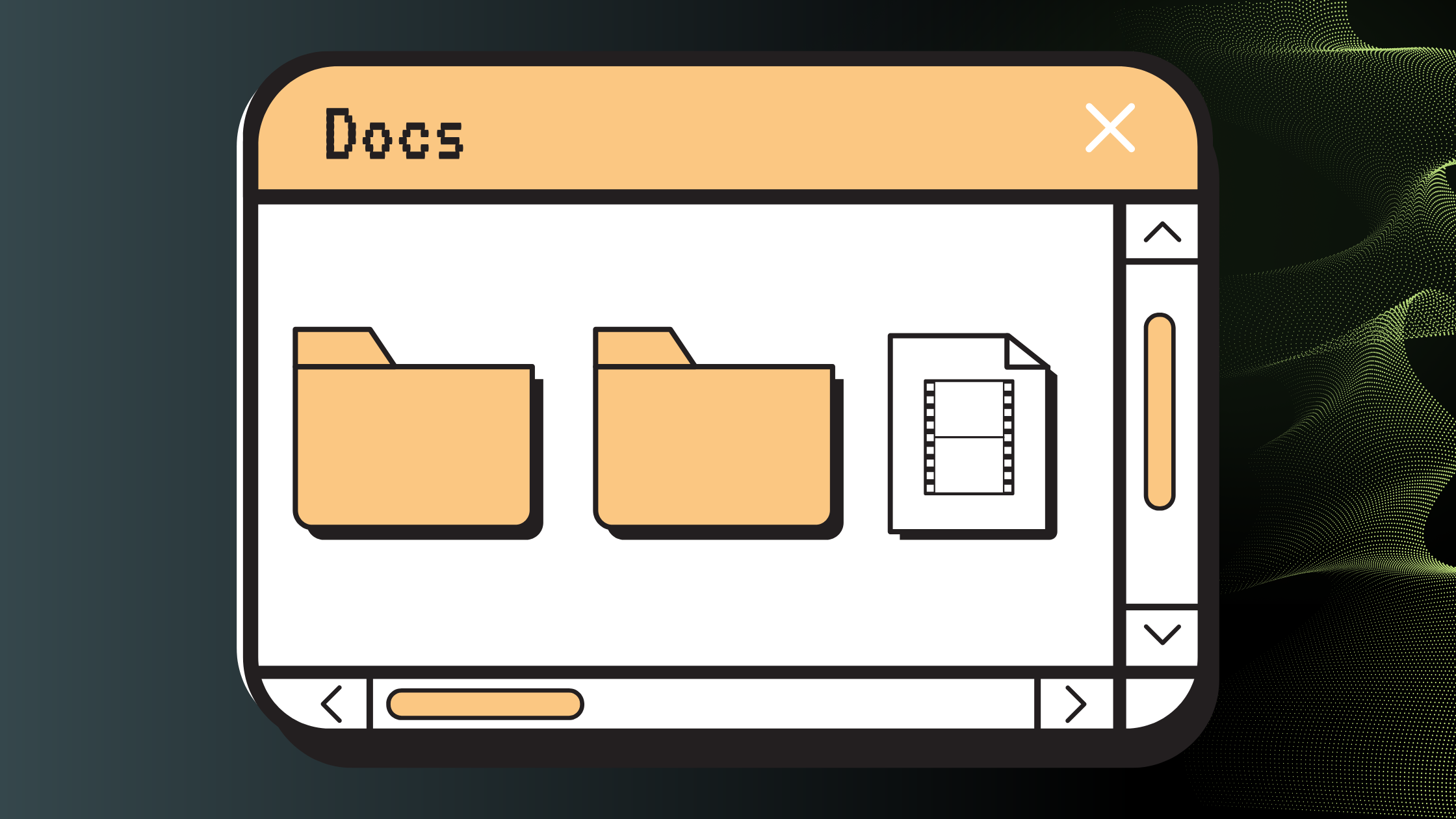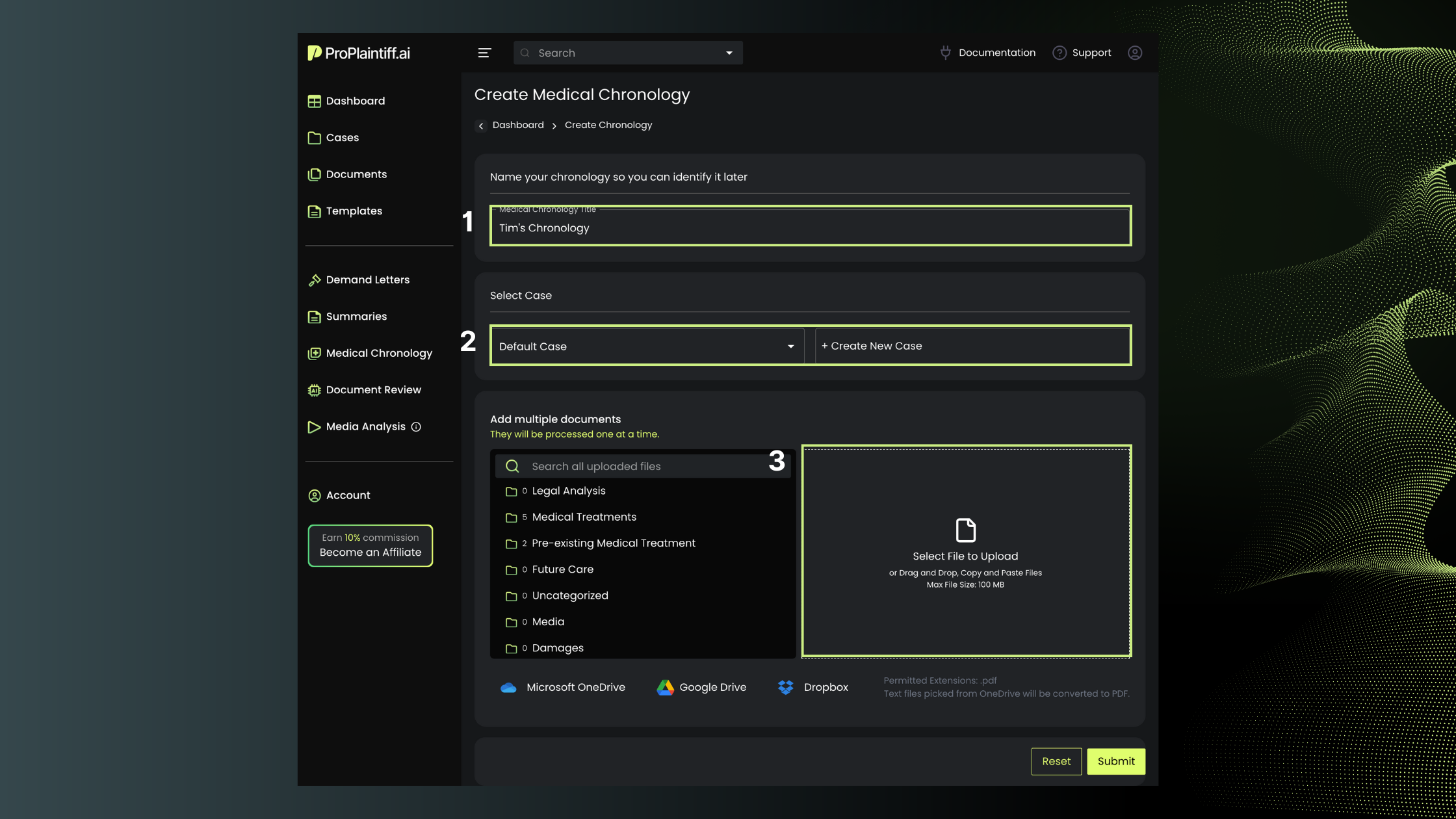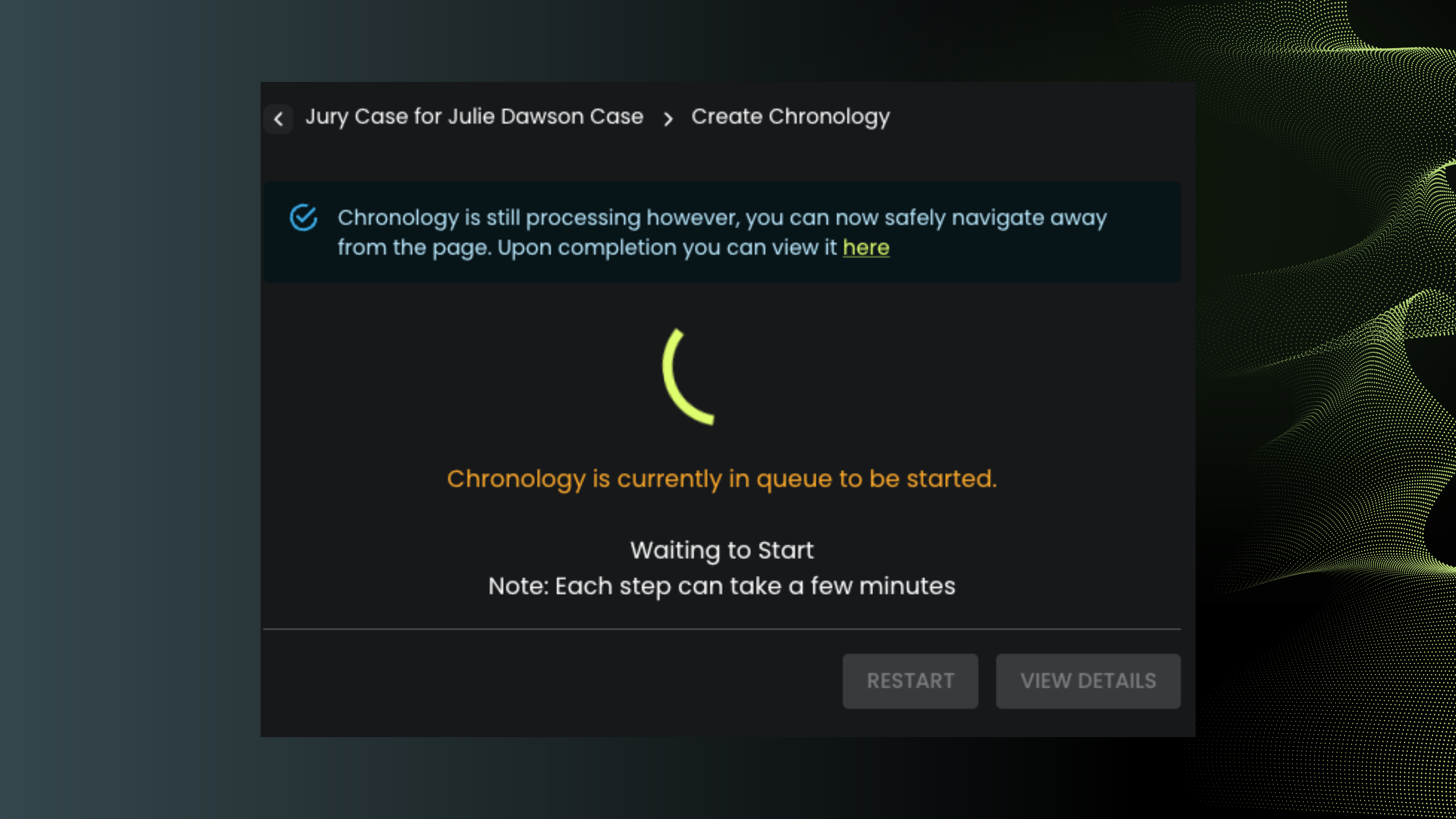Other Blogs
Check out other Legal AI Posts

Discover how you can leverage AI to build a more precise and efficient personal injury medical chronology. Understand the revolutionary impact of AI in the legal field, streamline the process, and improve accuracy with platforms like Proplaintiff.ai.

In personal injury cases, one crucial tool at your disposal is a detailed medical chronology. This legal document translates medical jargon into comprehensible language that helps legal professionals understand the extent of the injuries, the timeline of treatment, and the potential impact on a person's quality of life after the injury.
In this article, we'll explain how you can leverage AI technology to build an effective personal injury medical chronology, reducing your workload and potentially increasing efficiency in the process.
The building blocks of a solid personal injury medical chronology (med-chron) start with facts and work their way up to telling the story of the injury and its aftermath. The impact of a well-written med-chron document could mean the difference between a big win and a lost case.
Let's dive into these elements:
Creating a comprehensive personal injury medical chronology involves meticulous data collection and management. Done correctly, this can lead to greater case outcomes.
Getting started with creating a personal injury medical chronology can sometimes feel like trying to decode hieroglyphs. Luckily, AI enters the picture with features that make the process smoother and more accurate. Here, we break down the steps on how to tap into AI's capabilities in crafting a helpful medical chronology.
Step 1: Get the Records Organized. The first step, simply enough, is to collect and organize all relevant medical records. It can be hard copies, scanned documents, or fully digital versions. Regardless, this is the valuable data that your AI tool will analyze.

Step 2: Data Input. To get started simply start a new chronology, select a case, title your document then upload or drag and drop your files.

Step 3: AI Analysis. With the system prompted and the data uploaded, the AI will do its magic. It will scan the documents, extract important data, and generate a detailed chronology. This step is where the technology shines. It can sort through mountains of information to pick out pertinent details such as symptoms, treatments, and diagnoses.

Step 4: Review. Following the AI analysis and translation, it's time to review what the AI has produced. Usually, this is a bulleted or table-format chronology of relevant information. Look it over, see if everything is in place, and have a professional double-check it if needed.

Step 5: Export and Use. When you're satisfied with the AI-generated chronology, all that's left to do is export it for use. You may export in a variety of formats, including PDF, DOCX, or even save directly to Google Drive, allowing you to easily incorporate the information into your casework.
.png)
Leveraged correctly, AI can turn the grueling task of building a medical chronology into a rapid, accurate, and simplified process. However, the general chat models available today are not as reliable as those purpose-built for your industry. That’s where ProPlaintiff.ai steps in as your suite of AI tools built for personal injury law.
In this era where AI technology continues to evolve and permeate various sectors, it has become evident how instrumental it can be in the legal field, particularly when dealing with personal injury cases.
The creation of a personal injury medical chronology, a critical step in substantiating claims and determining case value, is markedly facilitated by AI. Compared to traditional manual methods that often present roadblocks like deciphering complex medical terms and devoting considerable time, AI simplifies the process.
By automating the understanding and translation of dense medical language into simpler layman terms, AI:
With so many chat models available to the general public, it’s no wonder that attorneys are facing fines for citing bogus case law in their AI-generated documents. Moreover, concerns over privacy and the security of information uploaded to public LLMs such as OpenAI’s ChatGPT mean lawyers need to be educating themselves on the tech their using and avoid tools not fit for document review. By leveraging dedicated tools such as ProPlaintiff.ai, attorneys can avoid many of these potential pitfalls.
So if you're immersed in the field of personal injury law, give AI a try. Let it handle the heavy lifting of building comprehensive and accurate medical chronologies, freeing you to focus on more strategic parts of your case.
With a digital assistant by your side, you're not just surviving the legal fray but thriving in it. After all, the future is here. Embrace it. Use AI, because it's high time we work smarter, not harder.
Check out other Legal AI Posts
